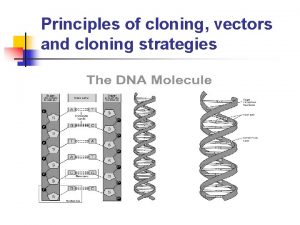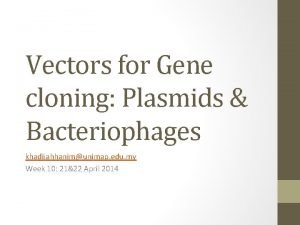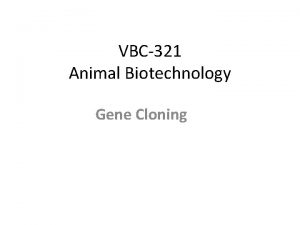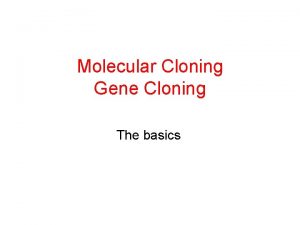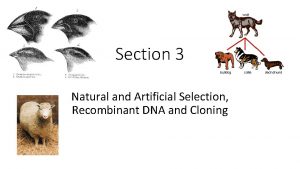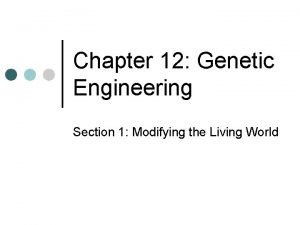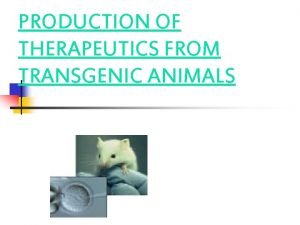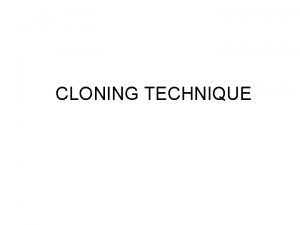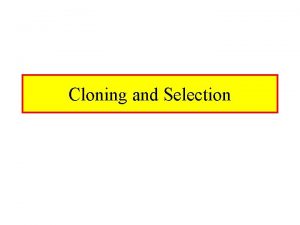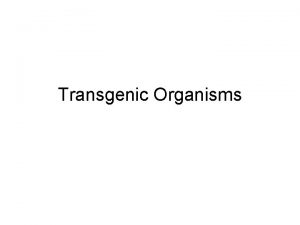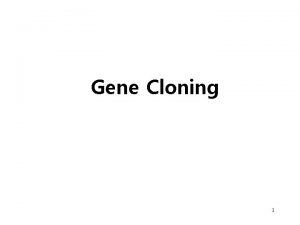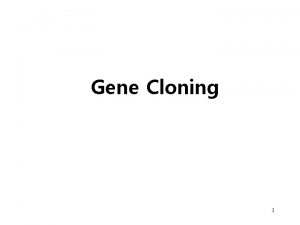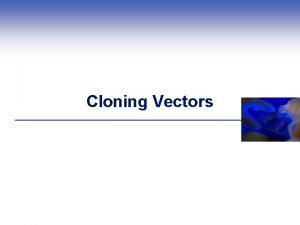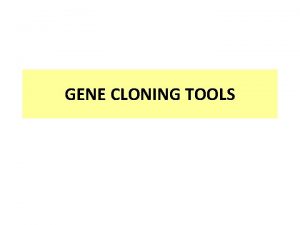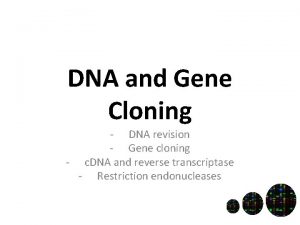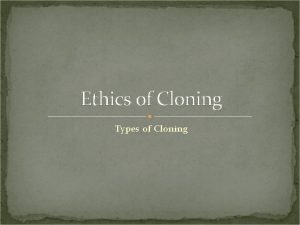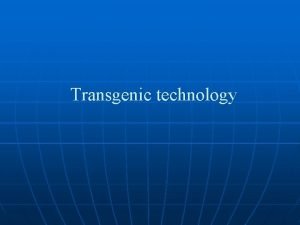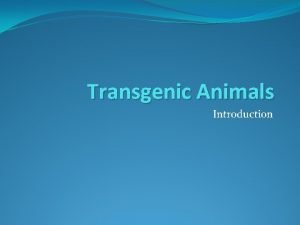Cloning 3 Types of Cloning Transgenic gene cloning
















- Slides: 16

Cloning

3 Types of Cloning • Transgenic (gene) cloning • Therapeutic (stem cell) cloning • Reproductive (organism) cloning)

Transgenic • • • Organisms that contain another species’ genes within their chromosomes First transgenic organisms were bacteria Scientists around the world use customized transgenic animals for their own research

Transgenic Benefits of transgenic animals – Animal models – Pharmaceutical production – Organ donors – Livestock improvement

Production of transgenic animals • • The transgene (which contains the DNA the scientist wants to transfer) is introduced into a single-cell embryo The embryo is transferred to a surrogate mother of the same strain Success rate is low (10%-30%) in mice Success rate decreases in mammals

Transgenic Care of transgenic animals – Most do not require special care – Some develop a susceptibility to disease Government’s view – May patent new organisms – Regulated by NIH

Future of transgenic animals • • Current research limited to transferring a small amount of genes at a time Much work remains to be done to finetune techniques Possible effects of foreign DNA remains a concern The use of transgenic models is an established part of biomedical research

Therapeutic Cloning • • • Procedure used to produce embryonic stem cells that theoretically can be used to treat diseases Goal of therapeutic cloning is to produce embryonic stem cells In therapeutic cloning, the embryo is not placed in a surrogate, but rather, undergoes cell division in the lab until it reaches blastocyst stage.

Therapeutic cloning • Types of Stem cells – Embryonic – Adult – Amniotic

Human stem cell research – 2001 legislation allowed federal funding of research using 64 existing human embryonic stem cells – Same legislation declared no federal funds for additional research. – Researchers must use existing human stem cell lines for research or find private funding sources

Therapeutic Cloning

Therapeutic – – – Creation of embryonic stem cells does not always use fertilized egg On the other hand, it does have the potential to become a living thing if transplanted into the uterus Question – is life destroyed if the stem cells are removed from the blastocyst four days later?

Therapeutic – – – Real advantage of stem cells – permits the production of perfect-match tissue Scientists have found that embryonic stem cells pick up cues from neighboring cells and differentiate into that cell type Scientists hope stem cells will be used to treat heart disease, Parkinson’s disease, other disorders of the nervous system

Reproductive Cloning

Reproductive Cloning – Goal of reproductive cloning is to create a new organism, human or animal – Clone = precise genetic copy – Reproductive cloning is really somatic cell nuclear transfer (SCNT) – Dolly the sheep – first cloned mammal in 1997 – Very few scientists believe human cloning (reproductive cloning) should be permitted

Reproductive cloning • Obstacles to reproductive cloning using animals – Success rate very low – Vast majority of problems occur during fetal development – Additional problems show up after birth and years later – “Large offspring syndrome” = cloned newborns 20 -30% larger than usual, making it hard to deliver unborn babies
 क्लोनिंग वेक्टर
क्लोनिंग वेक्टर Gene cloning
Gene cloning Gene cloning
Gene cloning Gene cloning
Gene cloning Steps of gene cloning
Steps of gene cloning Gene by gene test results
Gene by gene test results Chapter 17 from gene to protein
Chapter 17 from gene to protein What is transgenic organism
What is transgenic organism Artificial selection
Artificial selection Possible transgenic maize in oaxaca mexico
Possible transgenic maize in oaxaca mexico Transgenic bacteria
Transgenic bacteria Transgenic bacteria
Transgenic bacteria Transgenic
Transgenic Cloning pros and cons
Cloning pros and cons Gateway technology with clonase ii
Gateway technology with clonase ii Reproductive cloning process
Reproductive cloning process Suspension cloning
Suspension cloning
